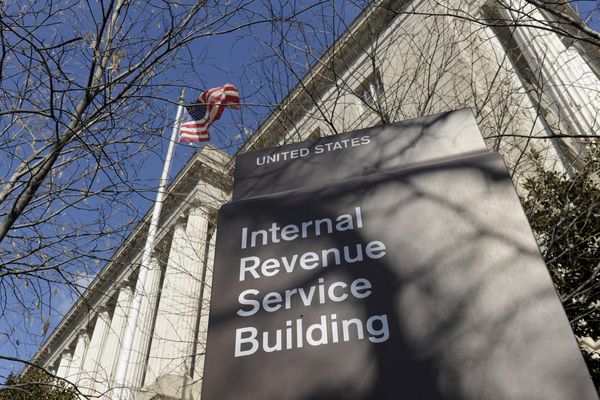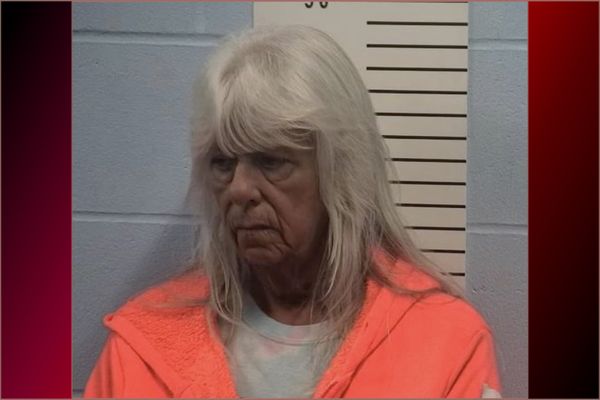Voting in Alaska's ranked choice election has already concluded, but results won't be known until more than two weeks after the election was held.
And some Alaskans are wondering: Why?
A rule made by the Alaska Division of Elections earlier this year dictates that second-ranking on voters' ballots — key information needed to determine who among the three candidates on the ballot will emerge as the winner of the race — won't be released until all ballots are counted on Aug. 31.
Only one other state, Maine, has conducted ranked choice voting in congressional elections before. And Maine's top election official says there is good reason to withhold early tabulation results before all ballots are counted.
In 2020, Alaska voters narrowly approved a ballot measure that implemented ranked choice voting for general elections in the state. The state's first general election under the new rules was the special U.S. House election held Tuesday to replace Rep. Don Young, who died in March after 49 years in office.
The three candidates on the ballot were Democratic former state lawmaker Mary Peltola, Republican former Gov. Sarah Palin and Republican businessman Nick Begich III. With thousands of ballots left to count, Peltola is currently in the lead with 38% of first-place votes; Palin is in second with nearly 32%; and Begich trails with 28.6% of the vote.
Election results
Under the state's new laws, if no candidate gets more than half the first-place votes, the last-place candidate is eliminated and their votes are redistributed to the other candidates' based on second-place votes. Without knowing those second-place votes, Alaskans will remain in the dark on the winner of the race until the second-place votes are divulged — after all ballots have been counted.
The state has a longtime rule, predating the new election laws, that dictates overseas ballots can arrive and be counted up to 15 days after an election day. So results from the Aug. 16 election are expected Aug. 31.
The 2020 ballot initiative had no language forcing election officials to withhold information on second-place votes. But Division of Elections director Gail Fenumiai said earlier this month that the decision was reached to avoid confusion, and because of Alaska's unique geography.
"We collectively as a team decided this would be our best approach given that this was our first time that ranked choice voting was going to be used," Fenumiai said in a video presentation to Alaska Common Ground. "It's more than just looking at how many first choice, how many second, how many third, how many fourth. It's the unique combinations on each ballot that have to be studied."
Of Alaska's 402 voting precincts, 131 rural and remote precincts report voting results by hand count. Those ballots must then be delivered to the Division of Elections before the votes can be tabulated.
In an email Friday, Division of Elections spokesperson Tiffany Montemayor said the division proposed and adopted the regulation "to avoid voter confusion and increase voter confidence."
"Because of ranked choice voting, you have to have all the ballots counted and the ballot images captured to determine the order in which candidates are eliminated. The division would not want to release preliminary ranked-choice results with candidates eliminated in one order and then release later results with the candidates eliminated in a completely different order," Montemayor said in an email. "Granted, with only three candidates in this ranked-choice race, this is less likely to occur. But the division still feels that voters will understand the new system best when they see the RCV results once all the ballots are in."
Maine Secretary of State Shenna Bellows said in an interview Friday that Alaska's rule "makes perfect sense."
"Partial counts in ranked choice voting only serve to confuse people," said Bellows, a Democrat. "There is really no way to evaluate at this point in time, given how different ranked choice voting is, how people make determinations of second choice votes, or whether they do at all."
"Our experience shows that you can't really know, and it makes the most sense in terms of voter confidence and accuracy to count all of the ballots at the same time," said Bellows, who assumed office last year.
In Maine's 2018 U.S. House race — the state's first ranked choice election — voters had to wait one week between election day and getting final results. That year, Maine's incumbent U.S. Rep. Bruce Poliquin had more first-place votes than the other two candidates. Under ranked choice voting, his Democratic challenger, current Rep. Jared Golden, came from behind and prevailed once second-choice votes were taken into account.
Bellows' view is not shared by everyone. FairVote, a nonpartisan organization that advocates for ranked choice voting reforms across the country, published earlier this month a report recommending that preliminary ranked choice tabulations be released election night and again as more ballots are counted.
"Preliminary results convey the same benefits in RCV races as they do in single-choice races," the report authors wrote. "Quickly releasing preliminary round-by-round results offers greater transparency and facilitates broader understanding and acclimation to ranked-choice voting."
The reports point to a 2018 mayoral race in San Francisco, where early tabulation results released election night and in subsequent days helped indicate to voters how close the race was even as more ballots were being counted.
Meanwhile in Alaska, Peltola, Palin and Begich have been lying low since election day. But political analysts are trying to crunch the numbers.
"My hot take is either it's Congresswoman Peltola or Congresswoman Palin," said political consultant Jim Lottsfeldt. Begich is trailing behind Palin and not likely to catch up. If he's eliminated, the question then becomes whether enough of Begich's supporters ranked Palin second for her to overtake Peltola. Lottsfeldt calls that "the million-dollar question."
Pollster and consultant Ivan Moore says that based on a poll he conducted late last month, he predicts Palin to narrowly beat out Peltola once second-place votes are tallied. Another pollster/consultant, Matt Larkin, said his previous polling showed that if Palin ended up in second place, Peltola would win.
Many factors are contributing to uncertainty over the number and distribution of second-place votes. Beyond it being Alaska's first experience with ranked choice voting, Begich and Palin attacked each other repeatedly in the days before the election, which could have reduced the number of Begich fans willing to rank Palin second. And Palin is a polarizing figure, with fans who enjoy her stardom and take note of the endorsement from former President Donald Trump, and detractors who remember her decision to step down as governor in 2009, before her term was up, and devote the past 13 years to endeavors outside Alaska politics. Such factors make it difficult for political insiders to make definitive predictions about how second-place votes will play out at the end of the month.
"I can see the desire, people feel like they have a need to know, but from an analytical perspective, it wouldn't give voters full and fair and accurate information about what the final totals would be," said Bellows. "So having the patience to wait until you have all of the ballots and then generating the ranked choice voting tabulation is going to lead to the most accurate presentation of what's actually happened."
With questions remaining, campaigning is expected to resume before final results are in. All three of the candidates in the running in the special election, along with Republican Tara Sweeney, are expected to advance to the regular November general election that will determine who will hold the U.S. House seat once the term that was originally Young's expires in January. The four candidates for the regular election emerged from a field of 22, and all have said they will remain in contention regardless of who wins the special election.
Bellows, the Maine secretary of state, had another recommendation for Alaska election officials: to livestream the voting tabulation process that will take place on Aug. 31. Election officials in Alaska have said they have not finalized a plan for communicating the tabulation process to the public.
"While watching the tabulation of an election can be as exciting as watching paint dry, having that level of transparency goes a long way in helping voters understand how the process works," Bellows said.







